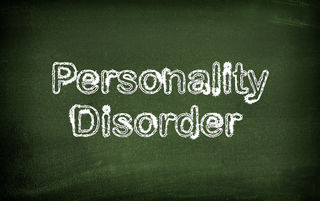Personality
Personality Disorder (PD) Types? No! It’s PD Dimensions
DSM-5 proposed an alternative dimensional model but the original was retained.
Posted December 30, 2016

With three years gone by since the publication of the DSM-5, researchers and clinicians have a renewed interest in righting past wrongs in the diagnostic classification of personality disorders. Some have argued that, nosologically, the ship went off course in the DSM-III while others have maintained support for categorical diagnosis and recent trends towards simplicity, homogeneity, and generality in personality profiling. Other academic researchers see the solution to our diagnostic quandary in dimensional trait models whereas another group finds the answer in clinically-based judgments. Debates about what is and what is not a personality disorder as well as what separates one personality disorder from the next have garnered interest since antiquity. As the DSM-VI nears, debate and controversy is alive and well in academia and should be interesting to follow in the coming months and years.
Some camps within academic psychology and psychiatry have been advocating that personality disorder diagnosis should go back to a time when definitions were not solely obsessed with achieving perfection in reliability and, instead, were created to match historical, theoretical and clinical accounts. Unsatisfied with post-DSM-III categorical classification and definitions of personality disorders, the scholarly and empirical literature is rife with calls for an increased focus on core internally-focused dimensions of personality. These dimensions include familiar constructs, such as empathy, self-esteem, attachment, and identity. In addition, researchers and clinicians have called for a fundamental shift away from the categorical model and symptom lists of the DSM-III through DSM-5 era.
The DSM-5 Proposal for an Alternative Dimensional Model: Missing, Mangling, and Merging Diagnoses
A revision to the categorical model was proposed in the DSM-5. The proposal, Alternative Dimensional Model (ADM), called for a return to the language of mental states; however, the language was stamped with the mark of trait theorists who considered single, adjectival terms the ideal. Credit should be given though for an effort at a great compromise. The marriage of narrative psychological language with personality-adjective traits will be a fruitful endeavor; however, the larger problem of the proposal lies in the missing, mangled, and merged personality disorders - 'household' names in the psychiatric nomenclature that have undergone tectonic shifts in their construct definitions, leaving them ripe for the history books rather than the DSM-VI. The proposal was deemed radical by many and did not pass but it left a powerful mark. It was printed in the DSM-5 and extensively discussed in journals within academic psychology and psychiatry. Survival of many classic personality disorders are at-risk in the DSM-VI.
In the DSM-IV, long-time staples — masochistic, passive aggressive, and depressive personality disorder types — were deleted. The DSM-5 attempted an again-unsuccessful further purge of traditional personality disorder labels by questioning the legitimacy and substance of schizoid personality disorder, histrionic personality disorder (HPD), dependent personality disorder (DPD), and narcissistic personality disorder (NPD).
What was behind the push to reduce the number of personality disorders and discard the schizoids, histrionics, dependents, and narcissists?
The push toward reductionism was fueled in part by a rejection of psychodynamic thinking and the goal of improving the reliability and validity of personality disorder diagnosis. Per experts in assessment, internal conflicts and dynamics were viewed as obstacles in the quest for perfection in reliability. Each new edition depicted pathological personalities as a one-sided prototypes and extreme examples of previously multifaceted, psychodynamic/early descriptive psychiatry-based personality disorder constructs. Trends towards parsimony and reliability in operational definitions led to some mangling of classic personality disorders.
Schizoid personality disorder is one of the paradigmatic examples of a prominent PD that since the DSM-III became increasingly mangled and merged, with calls for it to become missing completely in the DSM-5. Other "pure" personality disorder types, such as dependent personality disorder, paranoid personality disorder, avoidant personality disorder, and narcissistic personality disorder were also defined with an eye towards maximizing internal consistency over clinical reality. One result was that many PDs, especially those proposed for removal in the DSM-5, became rare to find in clinical practice or research. Low prevalence rates paved the way for a lack of academic research attention which in turn led to proposals for their removal.
Currently, once widely recognized personality diagnoses now have little resemblance to personality disorders encountered in clinical practice or research. Individuals rarely meet diagnostic criteria for PDs when definitions are mangled through reductionism. Thus, as is particularly true for schizoid PD, mangled PDs have very low prevalence rates, undermining recruitment and, therefore, research. Ironically, maybe the fix is in because, oftentimes, low prevalence and lack of research is the very justification used to call for the removal of certain PDs.
A Note to Readers: I hope you will stay tuned for just how the personality disorders described in this post have changed and for the latest, breaking research on personality disorder diagnosis and related topics.


